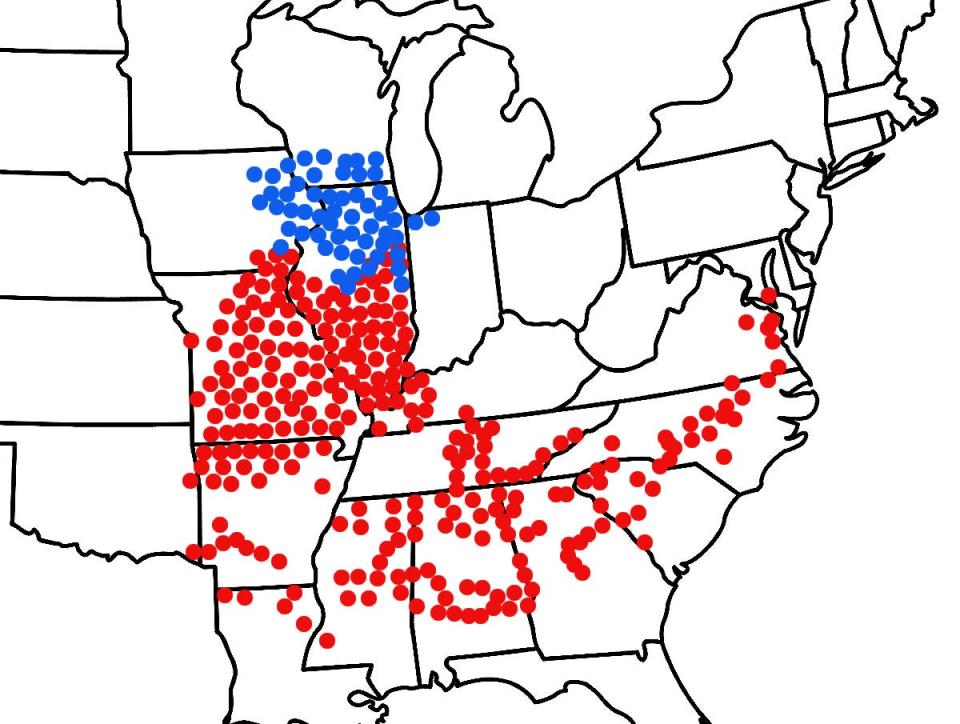Why Illinois will be the cicada capital of the United States in 2024
Illinois may well be the cicada capital of the United States this spring when millions of the large, loud insects emerge from the ground in an event unseen since 1803.
While annual cicadas emerge every midsummer in Illinois, this year will feature a once-in-several-lifetimes event when two particular broods of periodical cicadas will start appearing together — as early as May. Periodical cicadas emerge in 17- and 13-year cycles, and these two groups — Brood XIII and Brood XIX — appear at the same time only once every 221 years. And they only occur adjacently in one area: a handful of counties in east-central Illinois.

What are cicadas?
Cicadas are large, winged insects with bulbous eyes. The males make a buzzing noise that can also be musical in nature. They are among the loudest insects in the world, according to the Centers for Disease Control and Prevention.
Female periodical cicadas usually lay eggs in small branches. When the eggs hatch, the nymphs burrow into the ground, where they feed on juices from roots. They then emerge and molt, and the males begin their brief, noisy courtship song. After about a month, the adult cicadas begin to die.
When are the cicadas coming?
Annual — or dog-day — cicadas emerge during the heat of summer, around July, said Kacie Athey, a specialty crops entomologist with the University of Illinois Extension. But this year's two broods of periodical cicadas, with their distinctive red eyes, will appear earlier, beginning in late May, with some overlap, dependent on soil temperature.
What can we expect when cicadas come to Illinois?
Brood XIII, on a 17-year cycle, has a reputation for its population density. In 1990, there were reports of people in Chicago using snow shovels to clear sidewalks of dead cicadas, which have a noticeable odor. The same year, the Journal Star reported, "So many crushed cicadas cover some portions of driveways along Grandview that a paste seems to spread over the ground."
In 1956, the Journal Star termed the holes left in the ground as "abundantly evident" as Brood XIII emerged. The newspaper said one East Peoria resident's property "looks like a swiss cheese."

Do cicadas bite?
Cicadas don't bite and they don't sting, said Athey. Of the periodical variety, she told the Springfield Journal-Register, "They're super cool and they're weird because they suck on tree roots for 13-17 years and then they come out all at once." She encouraged people to appreciate what they have in cicadas and in the rare occurrence of 2024.
More nature: Tucked along the Illinois River near Peoria, this man-made island helps nature thrive
When will cicadas come back with these broods simultaneously?
After 2024, Brood XIII and Brood XIX cicadas won’t sync up their emergences again until the year 2245.
This article originally appeared on Journal Star: Double brood makes Illinois cicada capital of the country in 2024
Solve the daily Crossword

